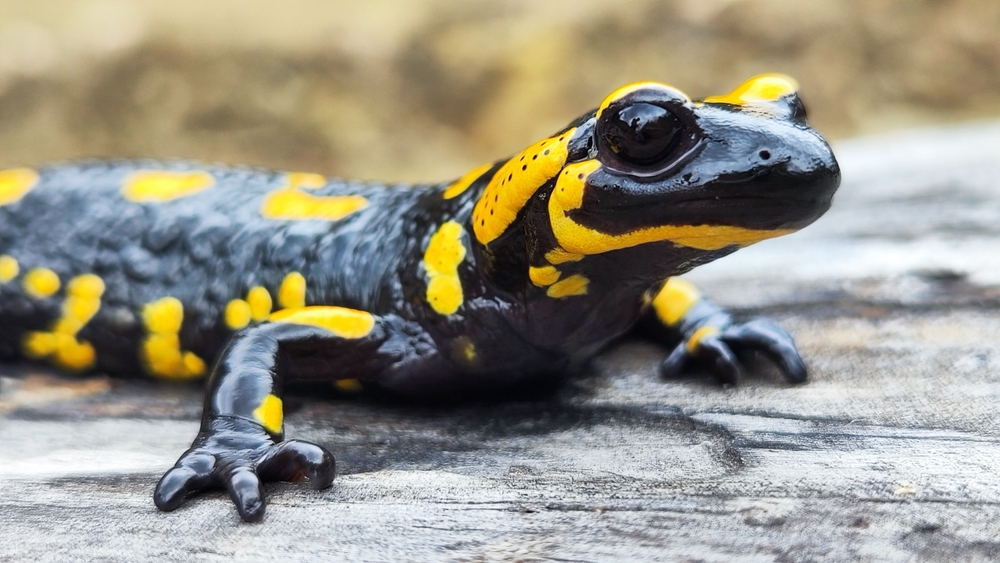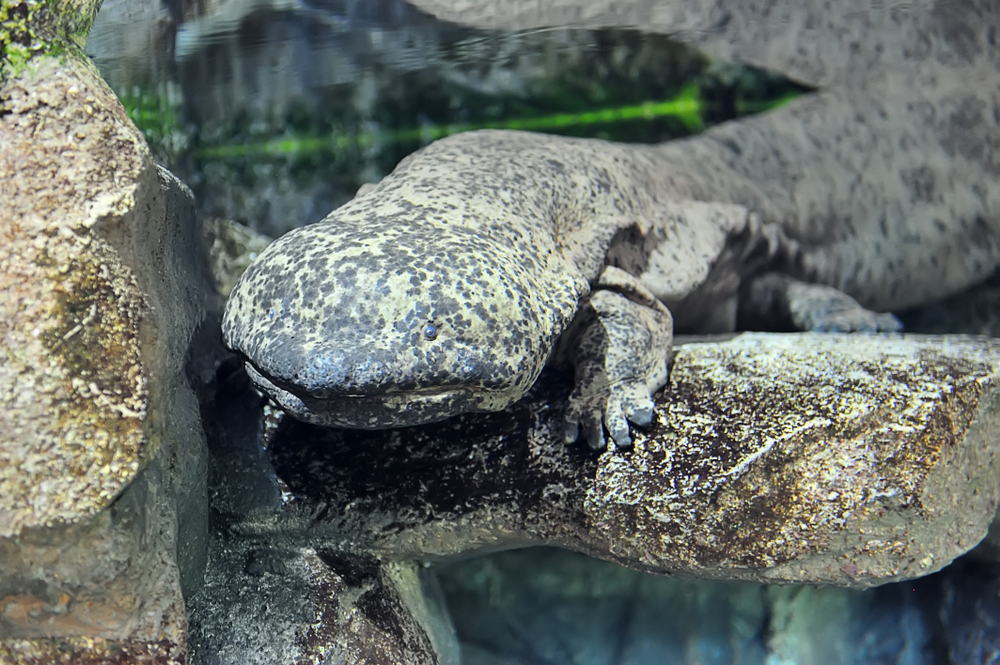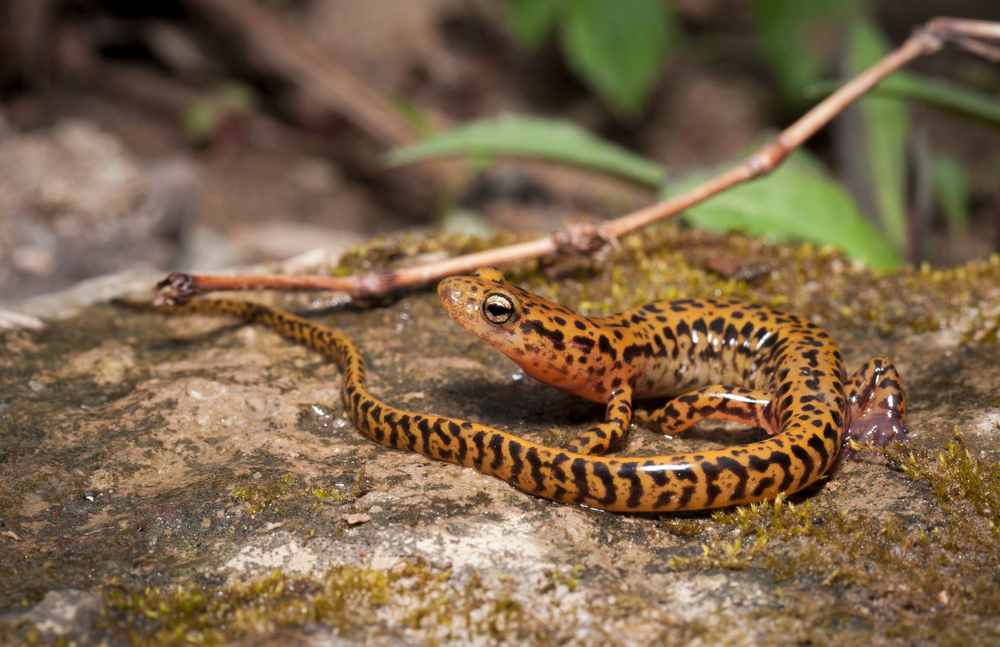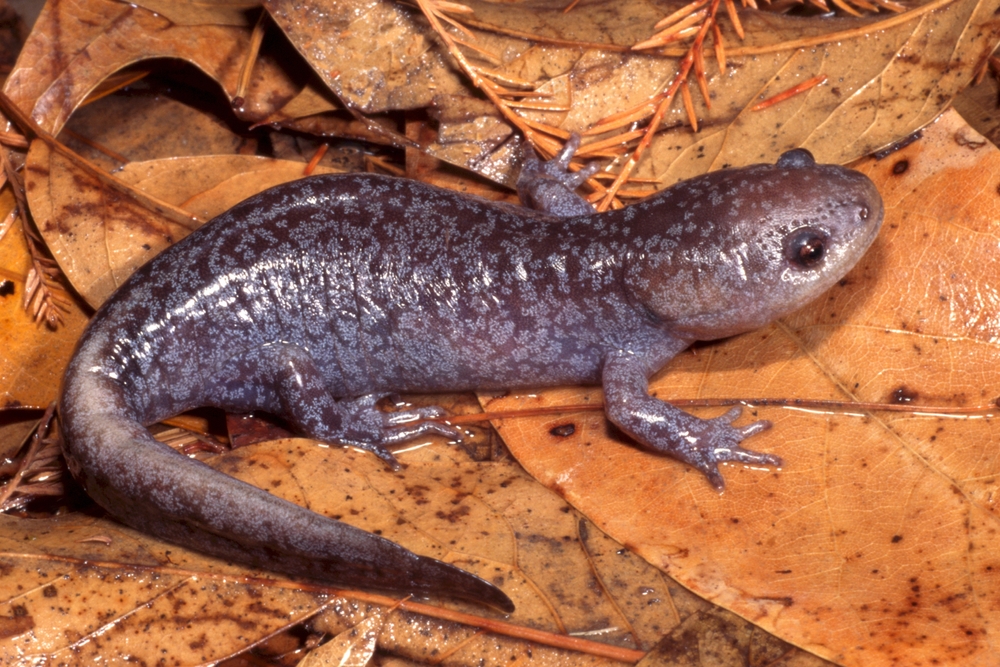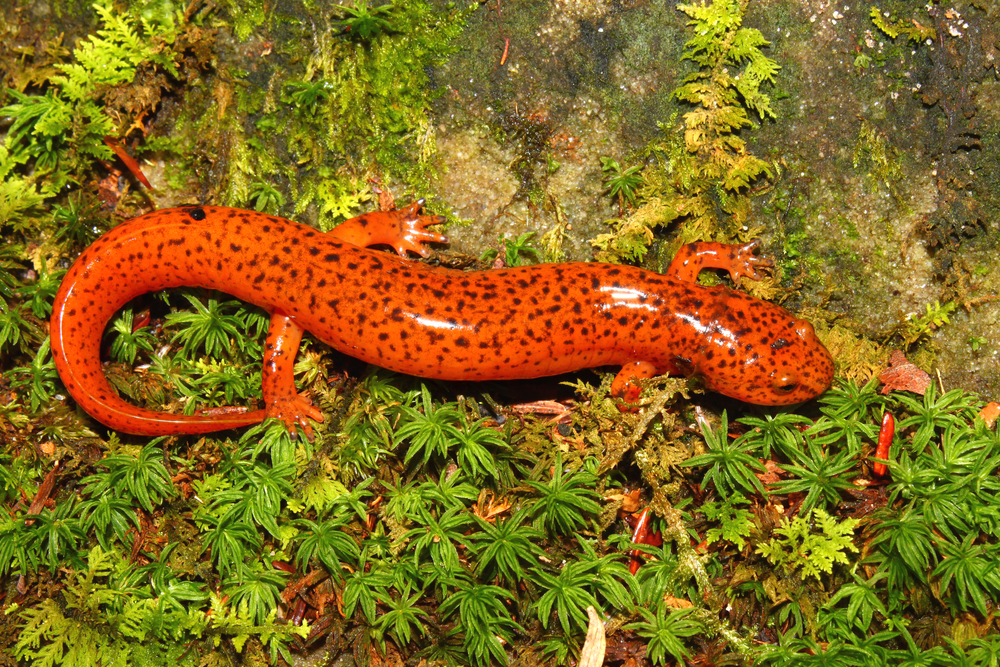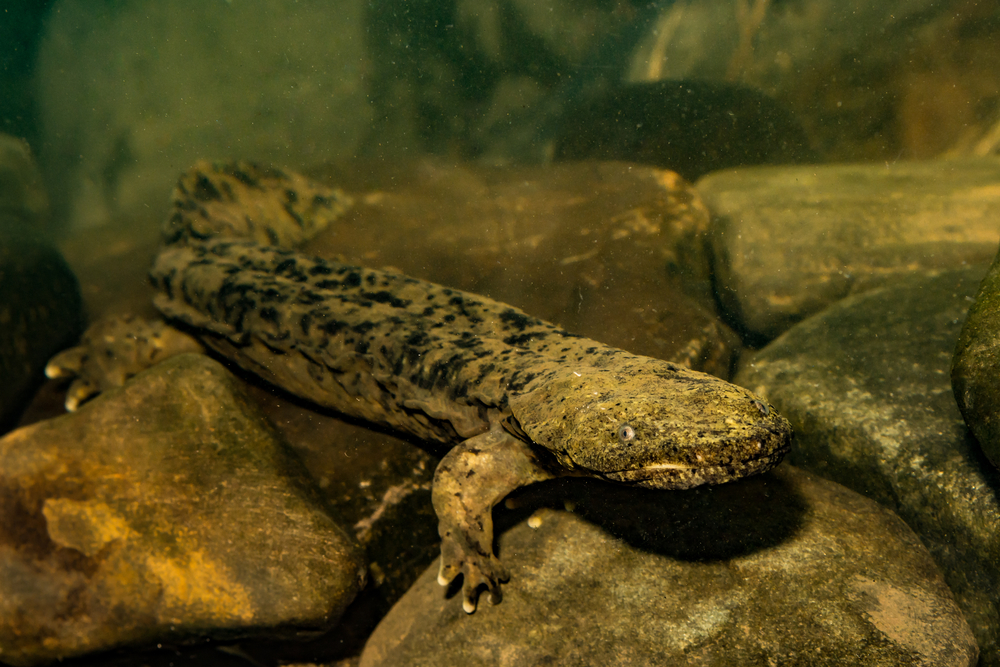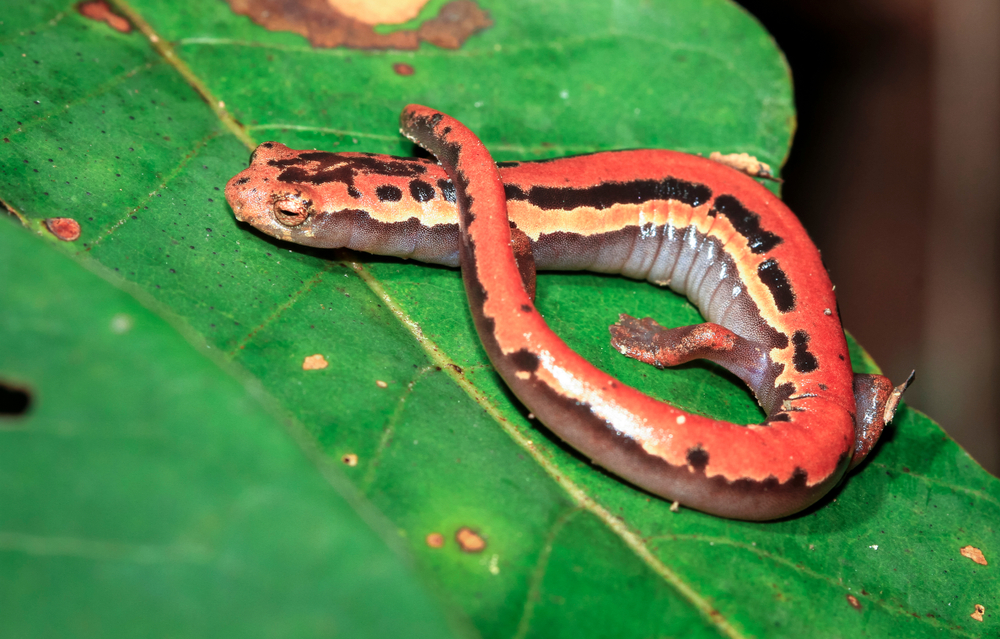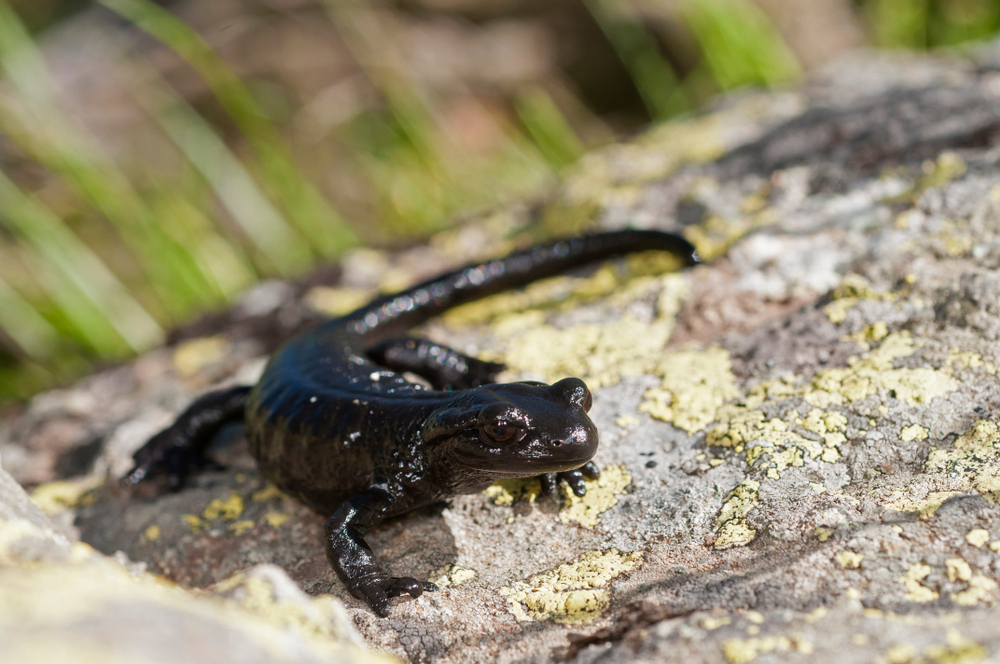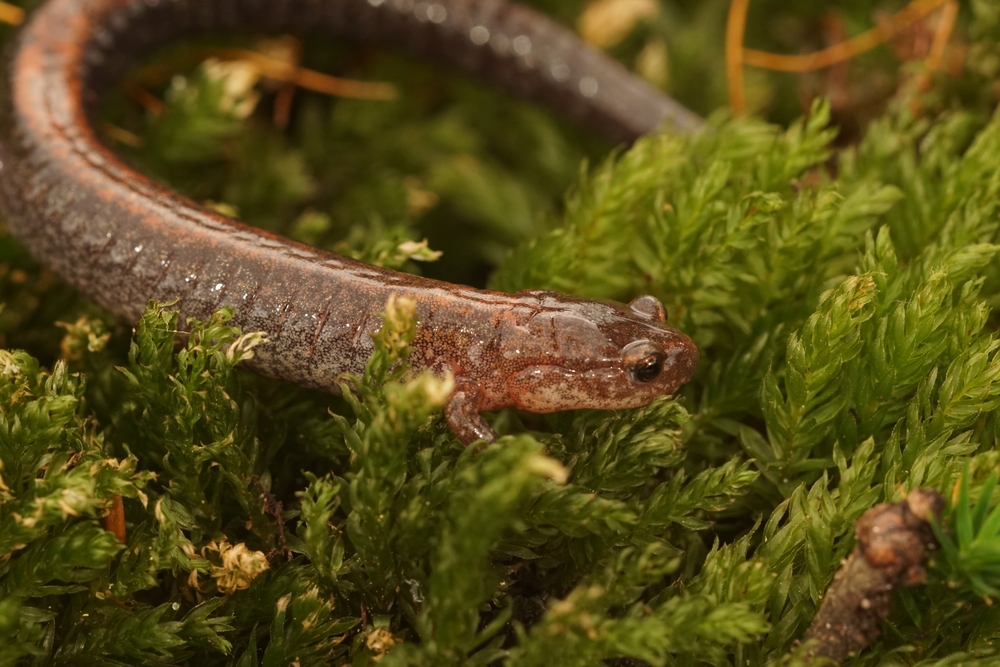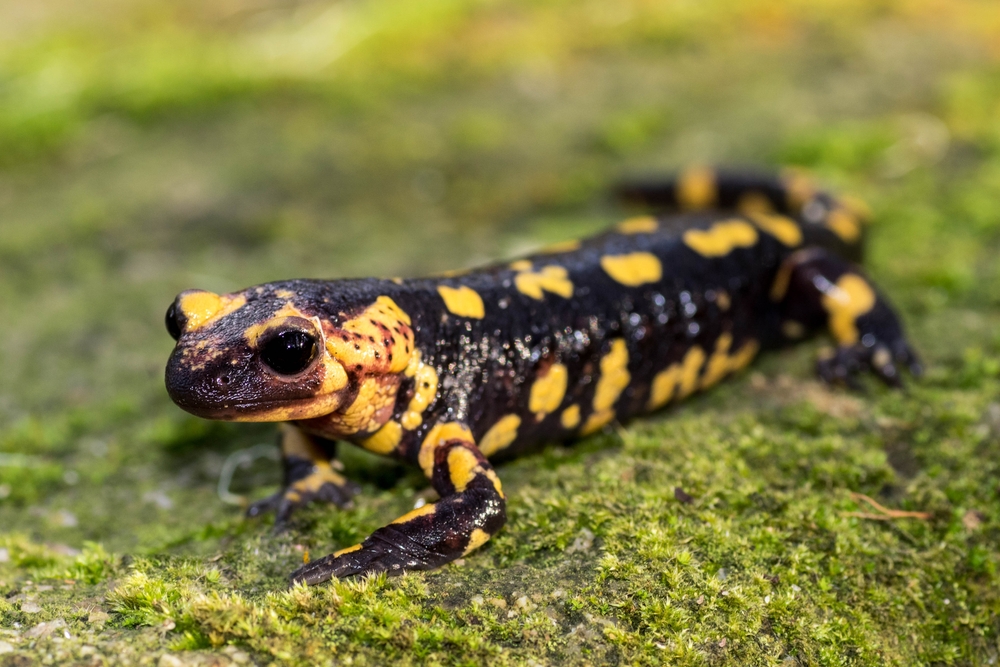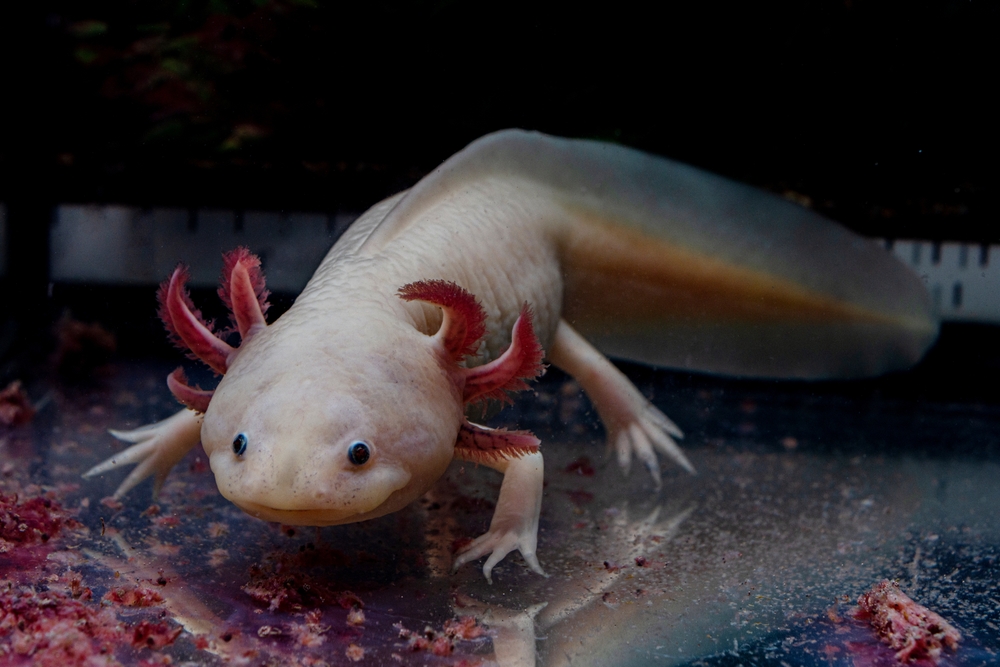Uniqueness
Iconic Yellow Spots:
The Spotted Salamander (Ambystoma maculatum) is best known for its bold, yellow or orange spots running in two uneven rows along its dark blue-black or slate-gray body. These bright spots are thought to serve as a warning signal to predators and help with species recognition during breeding. Its striking appearance makes it one of the most recognizable salamanders in North America.
Mass Breeding Migrations – “Big Night”:
One of the most dramatic behaviors of the spotted salamander is its annual mass migration to vernal pools. Triggered by warm, rainy nights in early spring, thousands of salamanders emerge from underground burrows and migrate to the same temporary, fishless wetlands where they were born. These synchronized events, sometimes called “Big Nights,” are vital for population survival and are celebrated by amphibian enthusiasts and conservationists alike.
Symbiosis with Algae:
Spotted salamander eggs host a unique symbiotic relationship with green algae (Oophila amblystomatis). The algae live inside the egg capsule, where they:
-
Photosynthesize and produce oxygen, helping embryos breathe
-
Consume nitrogenous waste from the developing salamander
This mutualistic relationship is one of the only known examples of a vertebrate and algae living symbiotically inside an egg, and may improve hatching success.
Dependence on Vernal Pools:
Unlike many amphibians that breed in permanent ponds, A. maculatum relies on vernal pools—temporary wetlands that dry up later in the year and are free of fish predators. This reproductive strategy helps reduce larval predation and promotes survival, but also makes the species highly sensitive to habitat loss, pollution, and climate change.
Long Lifespan and Delayed Maturity:
Spotted salamanders can live 20 to 30 years, which is exceptionally long for amphibians. They reach sexual maturity at 2–4 years and breed infrequently. Their slow life history strategy means they depend on stable environments and successful reproduction in relatively few breeding seasons over their lifetime.
Forest Floor Specialist:
When not breeding, they spend nearly the entire year underground in burrows, often made by other animals. This cryptic lifestyle protects them from predators and temperature extremes but also makes them difficult to observe outside of breeding season.
Summary:
The Spotted Salamander stands out for its vibrant yellow spots, dramatic mass breeding migrations, and rare symbiosis with algae inside its eggs. Its dependence on vernal pools, longevity, and secretive underground habits make it one of the most charismatic, ecologically specialized, and studied salamanders in eastern North America.



































































